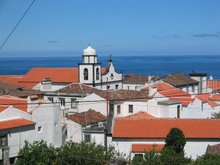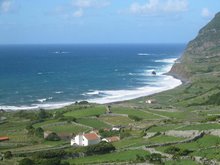
Scotland's geography is dominated by six important firths (river estuaries), these being the Firths of Forth and Tay and the Moray Firth on the east coast and the Firths of Lorne and Clyde and the Solway Firth on the west coast. We've already met two of these firths - the Forth and Clyde - which cut deep inland so that Scotland's east and west coasts come to within about 30 miles (50km) of each other at this "waist" of the country: you'll recall that, north of the Forth-Clyde was where the P-Celtic Picts lived and that the Romans (yawn) built the Antonine Wall from Forth to Clyde (roughly from modern day Glasgow to a bit west of modern day Edinburgh).
The line from the head of the Firth of Lorne (which in its innermost reaches is called Loch Linnhe - pronounced "Linnie") on the west coast to the head of the Moray (pron. "Murray" as in Andy) Firth on the east coast is called the Great Glen. Loch Ness (of monster fame) occupies about a quarter of the Great Glen which is a geological fault.
Note also the islands - Orkney and Shetland to the north-east (they are collectively known as the Northern Isles) and the Hebrides (pron. "HEB-rid-eez") to the west, also known as the Western Isles.
All of the above is well known to all Scotsmen (and even the odd Scotswoman when she's holding the map the right way up) but what is less well known are the features I've marked in green - Drum Alban (Gaelic for "ridge of Scotland") and The Mounth. These are the watersheds in the mountains marking the dividing line between where the rivers flow north and west to the Moray Firth, Great Glen and Firth of Lorne and south and east to the Firths of Clyde, Forth & Tay. Drum Alban and The Mounth are not names known to the average Scot nowadays but they were very significant in the formation of the medieval Kingdom of Scotland.
OK, that's enough to take in for now. I'm going to finish with an old photo of a village called Tyndrum which sits on Drum Alban. In the foreground and to the left, the river flows east to the Firth of Tay while the river in the glen in the right background flows west to the Firth of Lorne.





No comments:
Post a Comment